Explore
FORT SAINT MICHAEL
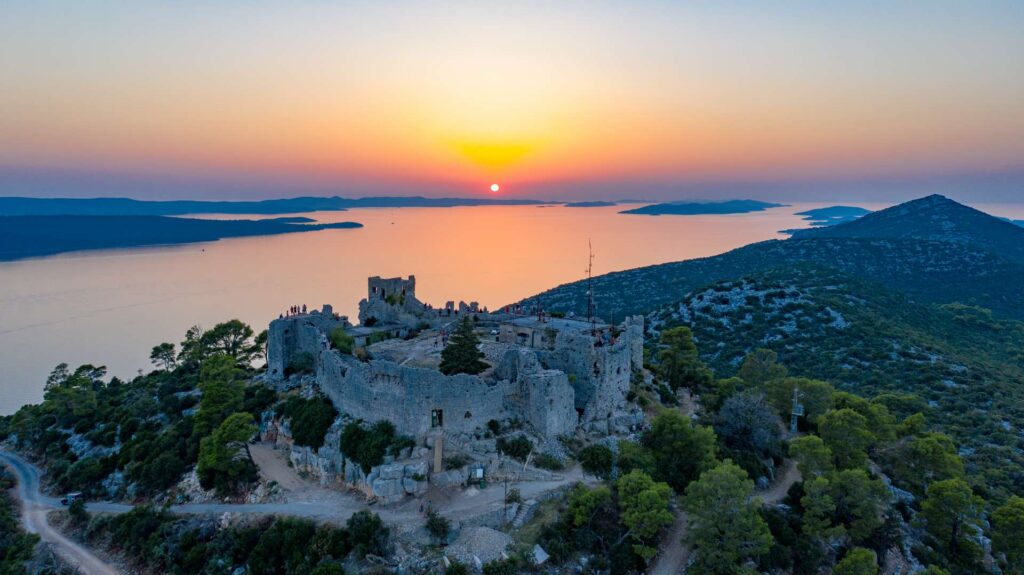
On the hill of St. Michael in Preko on the island of Ugljan, there are remains of the medieval fortress of the same name, which played a very important role throughout history, especially during the Venetian siege of Zadar in 1345 and 1346. Due to its location that was hard to reach, it was suitable as a reconnaissance and it contributed a lot to the defense of the city from the sea. The fortress was mentioned for the first time in the middle of the 14th century but it was probably built on the foundations of an older fort from the 6th century. The fortress once housed the Benedictine monastery of St. Michael with the church of the same name.
FISHING VILLAGE PRTJLJUG
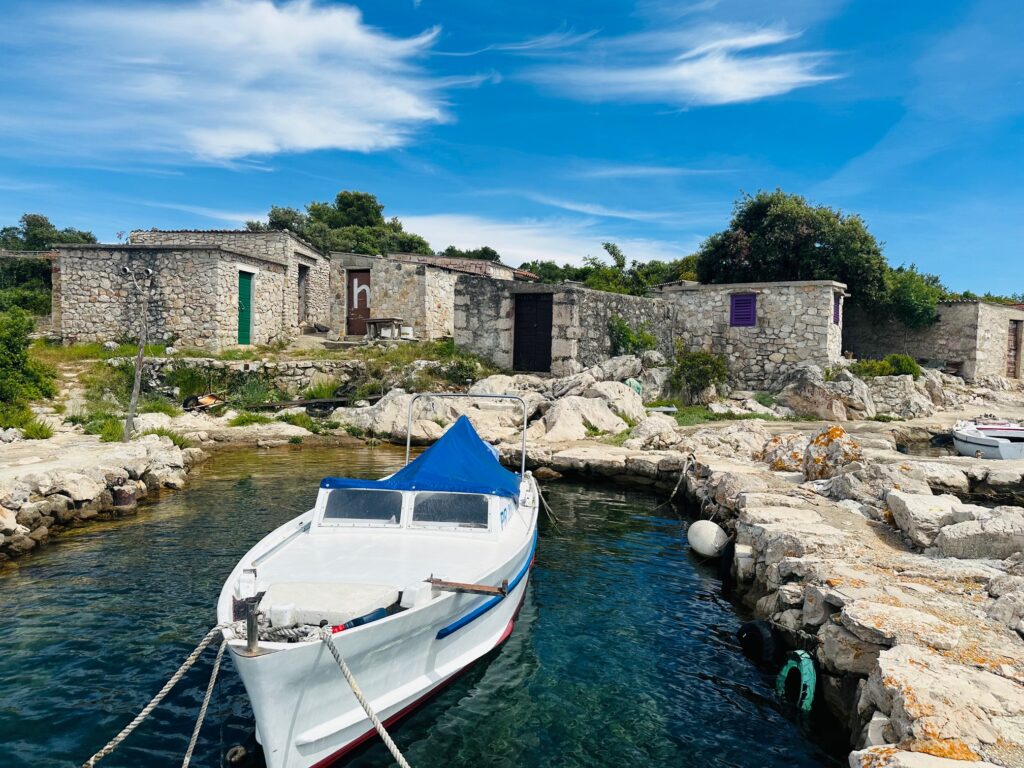
The rustic fishing harbour Prtjljug is an insider tip on Ugljan. This wild and romantic harbor is located on the unspoiled west coast of the island and can only be reached by a gravel road. Especially unique are the typical stone fishermen’s houses, which give this place a charming ambience. In the turquoise sea, the boats of the fishermen are rocking, colorful nets decorate the hamlets, and the quiet flair makes time stand still. The sea is also wonderfully clear on this stretch of coast, and snorkeling allows you to observe an interesting underwater world with numerous fish.
BEACH JUZNA LUKA
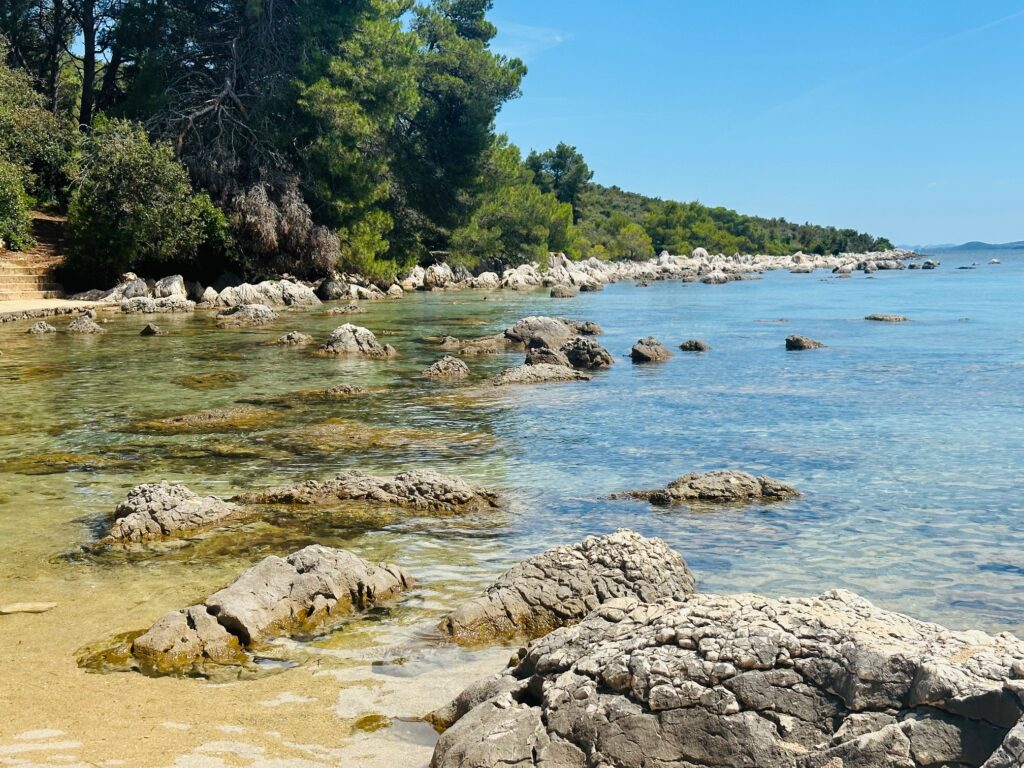
The Plaza Juzna Luka Beach is a highlight of the island of Ugljan. This gorgeous sandy beach is located in the north of the island, in an extremely picturesque landscape and is surrounded by wonderful green pine forests. However, this picturesque place is famous for its outstanding sandy beach, which conjures up a fascinating backdrop with the boulders in the turquoise sea. Moreover, while bathing there, you can enjoy wonderful tranquility and admire an interesting underwater world while snorkeling. Even in the high season, Juzna Luka beach remains idyllic and is a perfect tip for relaxing hours by the sea.
VILLAGE UGLJAN & FRANCISKAN MONASTERY
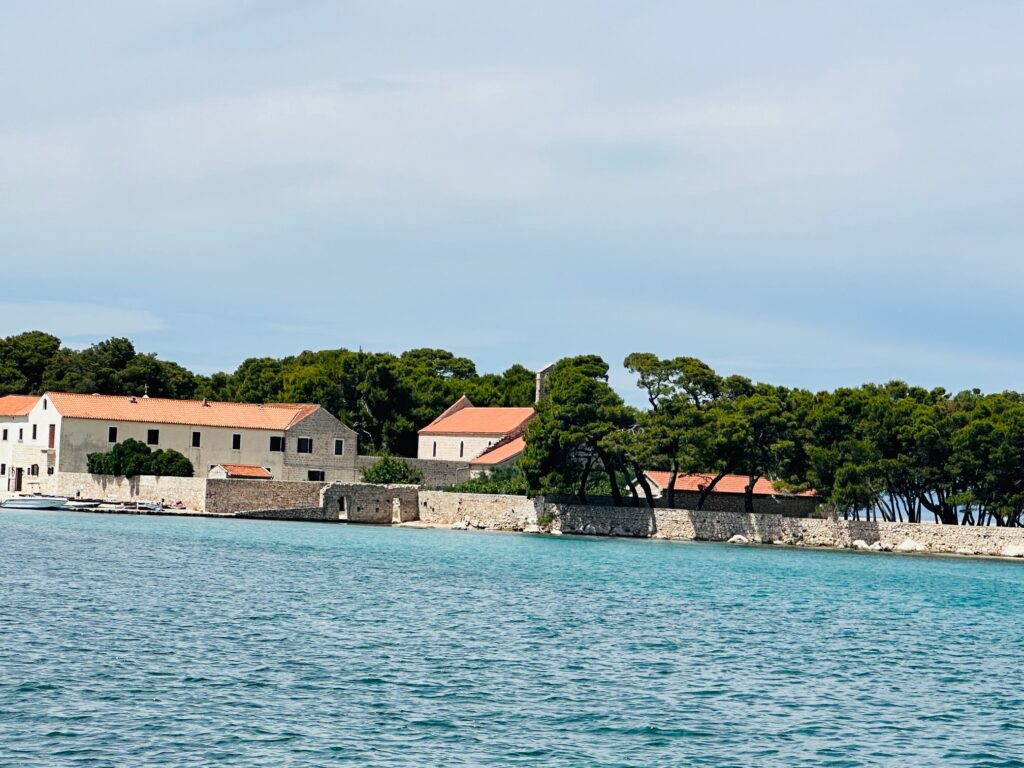
In the northern part of Ugljan Island is the homonymous village of Ugljan, a popular place for a quiet island vacation. Beautiful and the most important place to visit is the sandy beach Mostir with the picturesque Franciscan monastery of St. Jerome. The monastery was already founded in 1430, and today it is one of the most interesting attractions of the vacation island. The Mostir beach is also a real gem and very popular especially with families with children. Absolutely charming is also the promenade of Ugljan, which connects the center with the beaches of the different parts of the village. On the way you will always find mosaic benches, which are a particularly popular photo location in Ugljan.
GALOVAC ISLAND
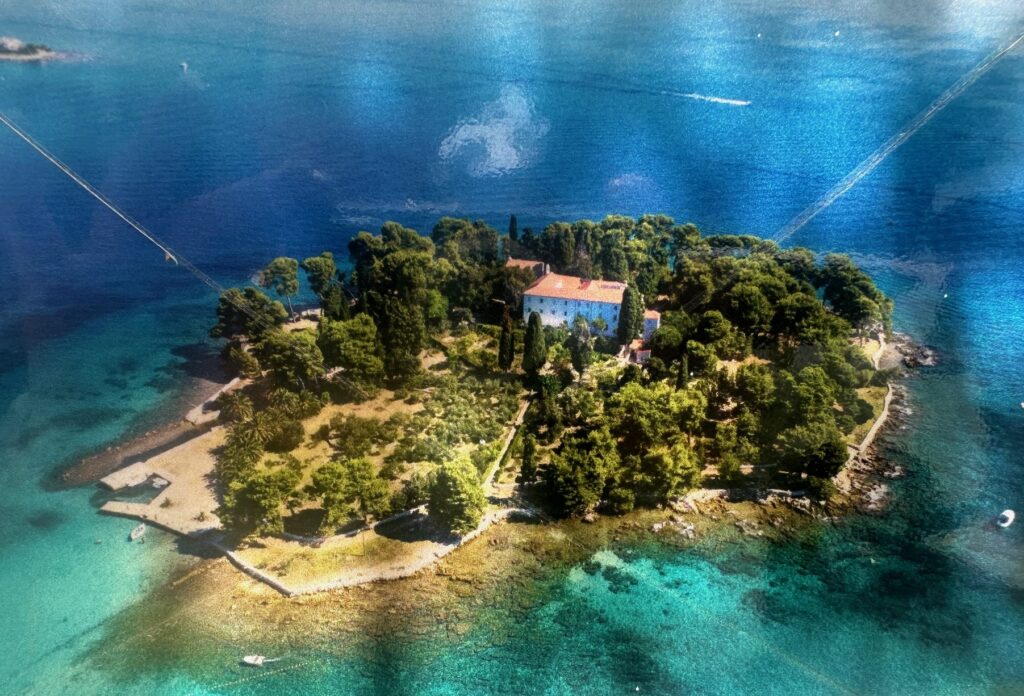
*Tip: A small rowing boat takes you from the harbor over to the monastery island for a small fee. However, many also take the direct way, and swim or wade through the shallow water.
The island of Galovac is one of the most beautiful attractions in Ugljan. This romantic monastery island is located only 85 meters from the village of Preko and a visit is a must on every trip. During a tour of the mini-island, you will be amazed by the wonderful idyll, where green pine trees together with the blue sea conjure up a Mediterranean oasis of tranquility. Also worth seeing is the monastery of St. Pavle Pustinjak from 1410, which is located on a small hill in the center of the island. However, the area around the church may not be entered with swimwear. It is also interesting to visit Sunday mass at 9:00 am because then this historical attraction as well as a library can also be visited from the inside.
CHURCH OF ST. JOHN
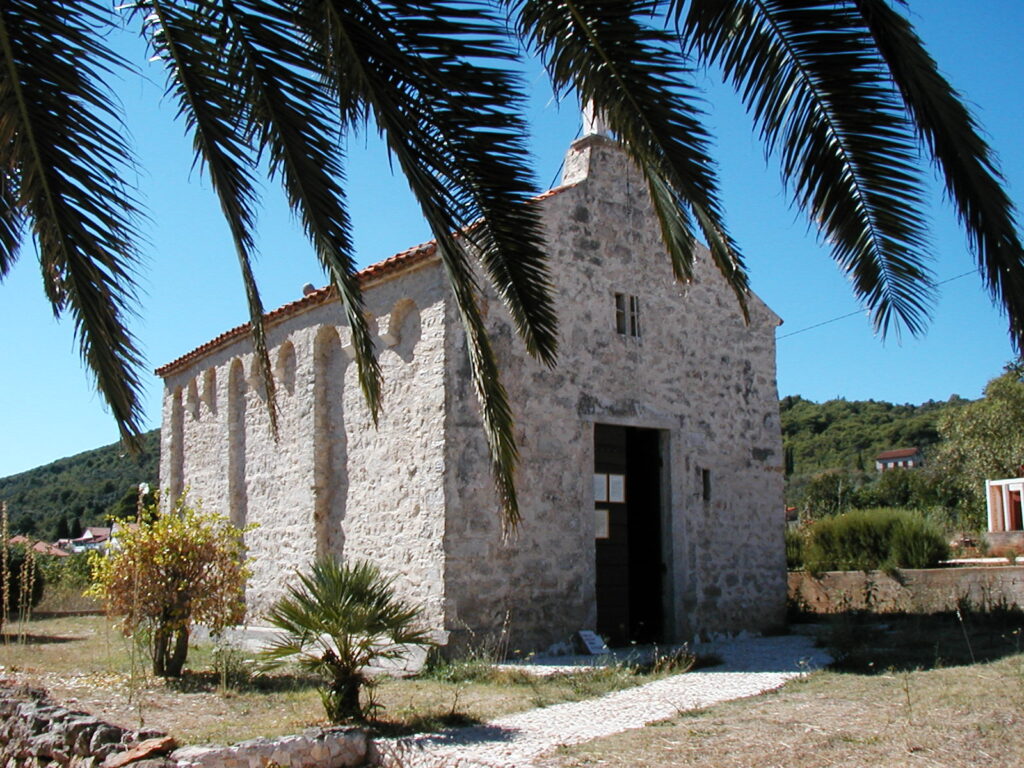
The Church of St. John the Baptist, built in stone at the end of the 11th century is located on the ferry dock in Preko. The first mention of the church of St. John the Baptist dates from 1 March 1377, when its chaplain Grgur is mentioned. It is preserved in its original form, with plenty of stone church furniture, it has been explored and restored. It is the most valuable example of early Romanesque architecture.
SEA ORGAN – ZADAR

Zadar is a proud owner of a unique blend of architecture and music, the world-famous Sea Organ, which is located right next to another modern installation, the Greeting to the Sun. The sounds that the Sea Organ produces are a result of the release of sea energy, or rather waves and tides. The Sea Organ was broken off and then gently shaped and returned to the sea. It stretches out over about seventy meters of the Zadar waterfront, below which, at the level of the lowest low tide, 35 pipes of various lengths, diameters, and slopes have been installed. When the most beautiful sunset illuminates the waterfront, the game of lights by the Greeting to the Sun accompanies the rhythm of the waves and the sounds of the Sea Organ.
THE GREETING TO THE SUN – ZADAR

The new symbol of Zadar is located in the Zadar port on the western point of Zadar Peninsula. The Greeting to the Sun is overlooking the Zadar Channel, the islands, and the world-famous sunset. This contemporary installation is made of 300 multi-layered glass solar panels in the shape of a circle of a 22-meter diameter. Throughout the day, it collects the energy of the Sun and transforms it into electricity, which is then used by and around the installation throughout the night.
CHURCH OF ST. DONAT – ZADAR
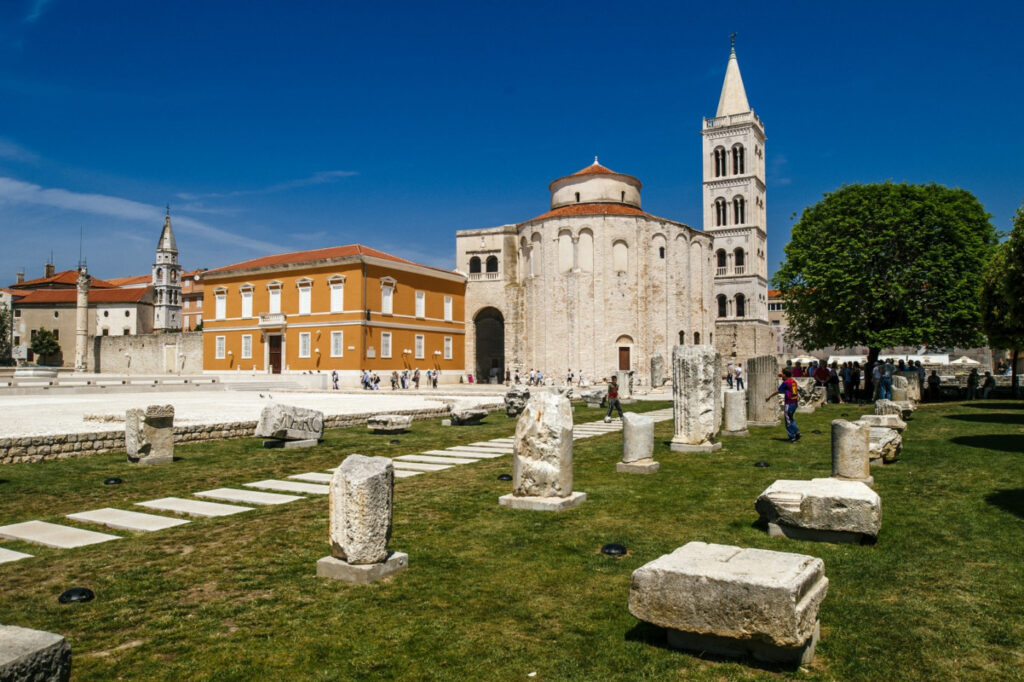
The Church of St. Donat in Zadar has long been desacralized, meaning no liturgies are held here, and from the end of the 19th century until 1954 it housed the Zadar Archaeological Museum. As St. Donat has exceptional acoustic characteristics, it has been the venue for Renaissance music festivals for decades. The monumental medieval monument was built in the 9th century on the model of early Roman (Byzantine) architecture. It was first named the Church of the Holy Trinity, and then later it bore the name of Bishop Donat who had it built.
FIVE WELLS – ZADAR
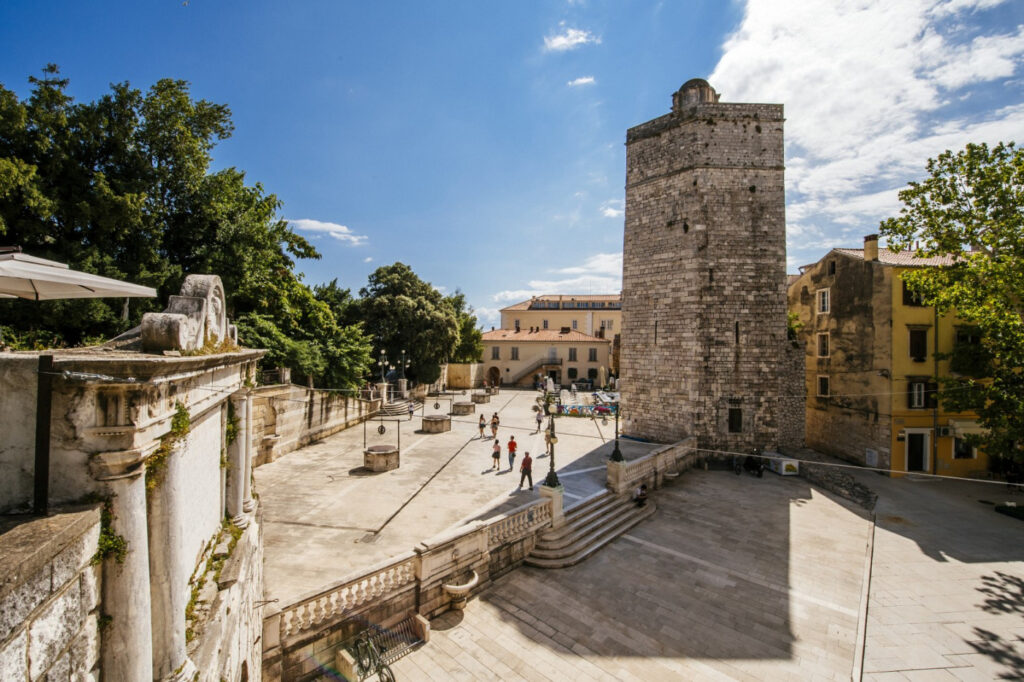
The Five Wells Square in Zadar was built in 1574 during the siege of the Ottoman Empire army when the defensive moat was covered up on the west side of the bastion, previously excavated in the Middle Ages. In its place, a large cistern for drinking water with five decorated wellheads was built, and parts of the aqueduct that used to bring water directly from the Vrana Lake, have been preserved. After the danger had passed, a protective wall was built on the site.